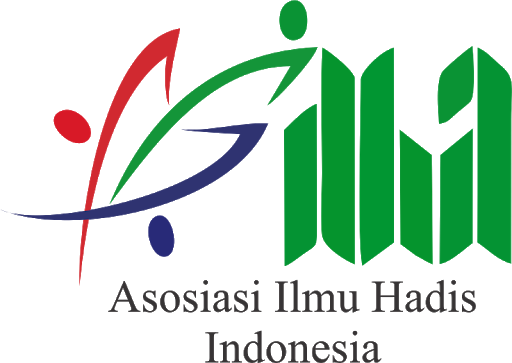The Tradition of Reading Asma'ul Husna in al-Muhsin Mosque, Krapyak, Yogyakarta
DOI:
https://doi.org/10.14421/livinghadis.2021.2665Keywords:
Religious Awareness, Religious Leaders, Religious Support, Tradition, Asma'ul HusnaAbstract
In its development a lot of religious traditions that emerged in the community, especially religious traditions carried out in a mosque, a place where the center of worship of Muslims in congregation. Masjid Jami 'Al-Muhsin Krapyak Wetan is one of them, there is a tradition that is constantly being carried out and has become a part of worship at the mosque. The tradition of recitation of Asma'ul Husna at the Jami Mosque 'Al-Muhsin Krapyak Wetan is a unique phenomenon, in which there are interesting things in terms of normative and historical. With qualitative-field research methods and using a phenomenological approach, the tradition will be presented so that it becomes a comprehensive study and provides interesting information. This study gets a conclusion that from the tradition there are several things that make the tradition to be lasting. Namely the existence of a person who becomes a role model, then there is awareness of knowledge about the things that support the implementation of the tradition continuously. All of these things support one another for the continuation of the tradition of reading Asma'ul Husna at the Mosque.
 Abstract viewed: 532 times
|
Abstract viewed: 532 times
|
 PDF downloaded = 499 times
PDF downloaded = 499 times
References
Afrianti - -, Utami, G. T., & Utami, S.-. (2014). Efektifitas mendengarkan asmaul husna terhadap penurunan nyeri kepala pada pasien cedera kepala. Jurnal Online Mahasiswa (JOM) Bidang Ilmu Keperawatan, 1(1), 1–6.
Ainah, N., & Abidin, M. Z. (2014). Studi komparatif Pemikiran H. Husin Qaderi dan H. M. Zurkani Jahja tentang Konsep al Asmâ al-Husnâ yang Menunjukkan Perbuatan Allah. Jurnal Studia Insania, 2(2), 147–164. https://doi.org/10.18592/jsi.v2i2.1098
Akhiyat. (2020, May 20). Wawancara Takmir Masjid [Personal communication].
Al-Bukhari, M. ibn I. ibn I. ibn al-Mughirah. (1987). Al-Jami’ al-Shahih li al-BUkhari. Dar al-Sya’b.
Al-Jauzy, J. al-D. A. al-R. ibn A. ibn M. (t.t.). Zada al-Masir fi ‘Ilm al-Tafsir. t.p.
Al-Jazairy, A. B. (n.d.). Aisar al-Tafasir.
Al-Mahalli, J. al-D. M. ibn A., & Al-Suyuthi, J. al-D. A. R. ibn A. B. (2010). Tafsir al-Jalalain. Menara Kudus.
Al-Naisaburi, A. al-H. M. ibn al-H. ibn M. al-Qusyairi. (t.th.). Al-Jami’ al-Shahih li al-Muslim. Dar al-Afaq.
Al-Qazwaini, I. M. A. A. M. bin Y. (1986). Sunan Ibnu Majah. Maktabah Al-Mu’athi.
Al-Qurthuby, A. M. ibn M. al-Ansary. (1967). Al-Jami’ li Ahkam al-Qur’an. Dar al-Kutub al-Arabiy.
Al-Qurthuby, A. al-H. A. ibn K. ibn A. al-M. ibn B. al-Bakry. (2003). Sayarah Shahih al-Bukhari li ibn Bathal. Maktabah Al-Rusyd.
Al-Qusyairi, A. al-Q. A. al-Karim. (2007). Tafsir al-Qusyairi al-Musamma Lata’if al-Isyarat. Dar al-Kutub al-Ilmiyyah.
Al-Sa’di, A. ar-R. ibn N. ibn A. (2000). Tafsir al-Karim al-Rahman fi Tafsiri Kalam al-Mannan. Mu’assasah Al-Risalah.
Al-Sulami, M. ibn I. A. I. al-Tirmidzi. (1987). Al-Jami’ al-Shahih Sunan al-Tirmidzi. Dar al-Ihya’ al-Turats al-Arabiy.
Al-Syafi’i, A. ibn A. ibn H. abu al-Fadl al-Asqalani. (1379). Fath al-Bari Syarh Shahih al-Bukhari. Dar al-Ma’rifah.
Al-Syaibani, A. bin H. A. A. (1987). Musnad al-Imam Ahmad bin Hanbal. Mu’assasah Al-Qurtubah.
Al-Thabrani, A. al-Q. S. ibn A. ibn A. ibn M. al-Lakhmi al-Syami. (n.d.). Tafsir al-Qur’an al-Karim al-Mansub li al-Imam al-Thabrani.
Badruzzaman. (2020, May 20). Wawancara Jama’ah Masjid Jami’ Al-Muhsin Krapyak Wetan [Personal communication].
Bahar, H. (2018). | Bahar. Tawazun: Jurnal Pendidikan Islam, 9(2), 239–258. https://doi.org/10.32832/tawazun.v9i2.1240
Dasuki. (2020, May 20). Wawancara Jama’ah Masjid Jami’ Al-Muhsin Krapyak Wetan [Personal communication].
Dewi, S. K., & Qudsy, S. Z. (2018). Living Hadis: Praktik, Resepsi, Teks, dan Transmisi. Q-Media dan Ilmu Hadis Press.
Dimyati, U. (2020, May 20). Wawancara Keluarga Pondok Pesantren Aji Mahasiswa Al-Muhsin Krapyak Wetan [Personal communication].
Hakim, L. (2020, May 22). Wawancara Santri PP. Aji Mahasiswa Al-Muhsin Krapyak Wetan [Personal communication].
Kementerian Agama RI. (2010). Al-Qur’an dan Terjemahannya. Karya Toha Putra.
Khoirunnisa, L. (2017). Hubungan antara Kebiasaan Membaca Asmaul Husna dengan Kecerdasan Emosional Siswa Kelas XI MA Nurul Ummah Yogyakarta. Jurnal Pendidikan Agama Islam, 14(1), 51–68. https://doi.org/10.14421/jpai.2017.141-04
Pemerintah Desa Panggungharjo. (2020, May 20). Padukuhan Krapyak Wetan [Padukuhan Krapyak Wetan]. https://www.panggungharjo.desa.id/pedukuhan-krapyak-wetan/
R, A. R. (2011). Memahami Esensi Asmaul Husna dalam Alqur’an (Implementasinya Sebagai Ibadah dalam Kehidupan). Jurnal Adabiyah, 11(2), 150–165.
Rafiq, A. (2012). Sejarah al-Qur’an: Dari Pewahyuan ke Resepsi (Sebuah Pencarian Awal Metodolgis)”. In Islam, Tradisi, dan Peradaban. Bina Mulia Press.
Downloads
Published
Issue
Section
License
- Authors who publish with this journal agree to the following terms:
- Authors retain copyright and grant the journal right of first publication with the work simultaneously licensed under a Creative Commons Attribution License that allows others to share the work with an acknowledgement of the work's authorship and initial publication in this journal.
- Authors are able to enter into separate, additional contractual arrangements for the non-exclusive distribution of the journal's published version of the work (e.g., post it to an institutional repository or publish it in a book), with an acknowledgement of its initial publication in this journal.
- Authors are permitted and encouraged to post their work online (e.g., in institutional repositories or on their website) prior to and during the submission process, as it can lead to productive exchanges, as well as earlier and greater citation of published work.
















